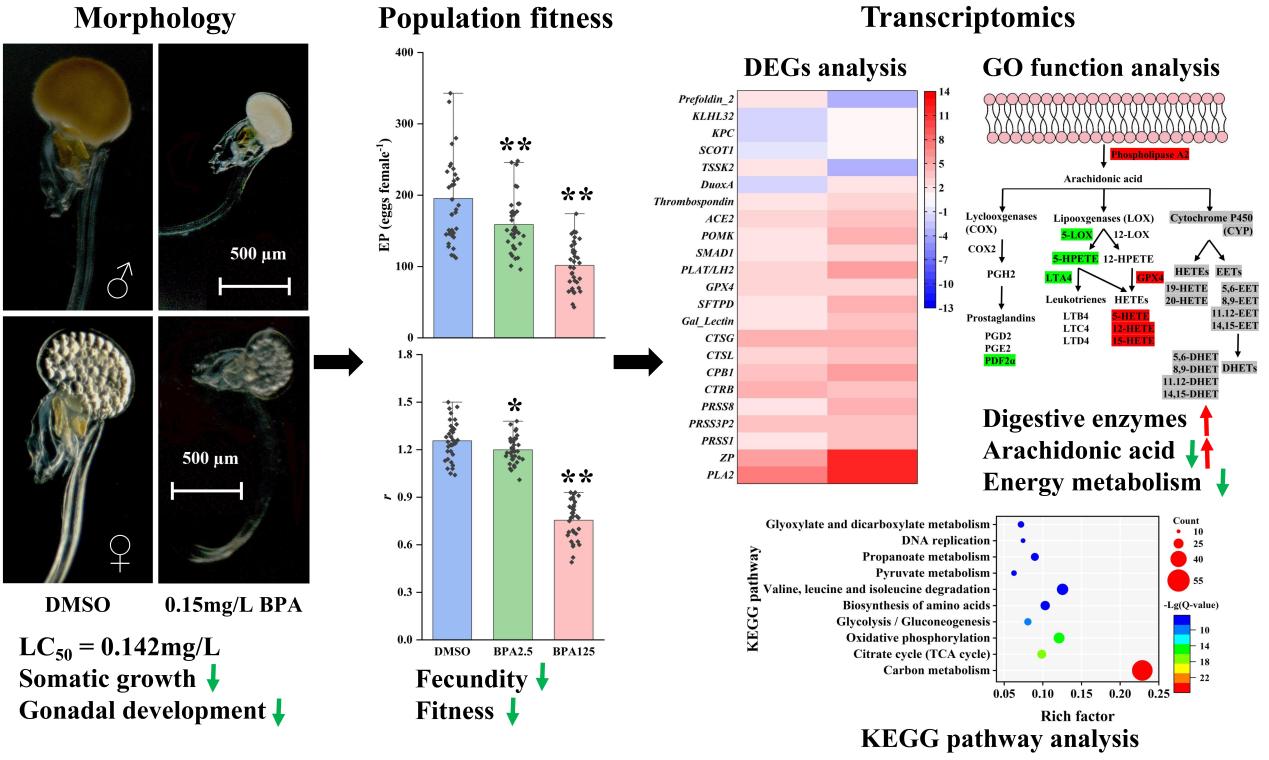Study Sheds Light on Potential Impacts of Bisphenol Contaminants on Marine Appendicularians
Bisphenol compounds (BPs), crucial ingredients in the production of various polymers, are ubiquitous in our daily lives and industrial processes. Bisphenol A (BPA), a prevalent BP in the environment, has been extensively studied for its impacts on diverse species, yet its specific mechanisms of action in marine appendicularians remain largely unknown.
Recently, the research team led by Prof. ZHANG Guangtao of the Jiaozhou Bay Station at the Institute of Oceanology of the Chinese Academy of Sciences (IOCAS), examined the comprehensive impacts of BPA on the survival rates, growth patterns, and reproductive capabilities of the globally ubiquitous marine appendicularian, Oikopleura dioica, at environmentally relevant concentrations.
The study was published in Journal of Hazardous Materials on Aug. 16.
Acute toxicity testing revealed a remarkable sensitivity of Oikopleura dioica to BPA exposure, with a median lethal concentration (LC50) of merely 0.14 mg/L, 1-2 orders of magnitude lower than that of common aquatic models such as Daphnia magna and zebrafish.
Appendicularians are considered the second most abundant marine mesozooplankton and serve as an important shortcut that allows rapid energy transfer from producers to consumers in the marine microbial food web. "Our work underscores the potential of the appendicularian Oikopleura dioica as a valuable sentinel for monitoring bisphenol stress in marine environments," said LI Shuai, first author of the study.
Further morphological and transcriptomic analyses illuminated the specific toxic effects of BPA on Oikopleura dioica. At environmentally relevant concentrations of 125 μg/L, BPA significantly disrupted the growth and reproduction processes of the appendicularian, affecting the normal secretion of digestive enzymes and phospholipase A2, thereby impairing digestive system function and arachidonic acid metabolism. Additionally, it downregulated the mRNA expression levels of enzymes associated with carbohydrate and energy metabolism. Notably, even at concentrations generally considered safe for the environment (2.5 μg/L), BPA adversely impacted female fecundity and altered male gene expression patterns.
"Our findings not only deepen the understanding of the adverse effects of bisphenol pollutants in aquatic invertebrates with specific reproductive strategies, but also address the need to reassess environmental safety thresholds of bisphenols," said Prof. ZHANG, the corresponding author.

Potential impacts of bisphenol A (BPA) on Oikopleura dioica morphology, population fitness, and transcriptomics.
Shuai Li, Yi Liang, Guangtao Zhang*. (2024). Growth and reproductive toxicity of bisphenol A in Oikopleura dioica at environmentally relevant concentrations. Journal of Hazardous Materials, 479, 135552.